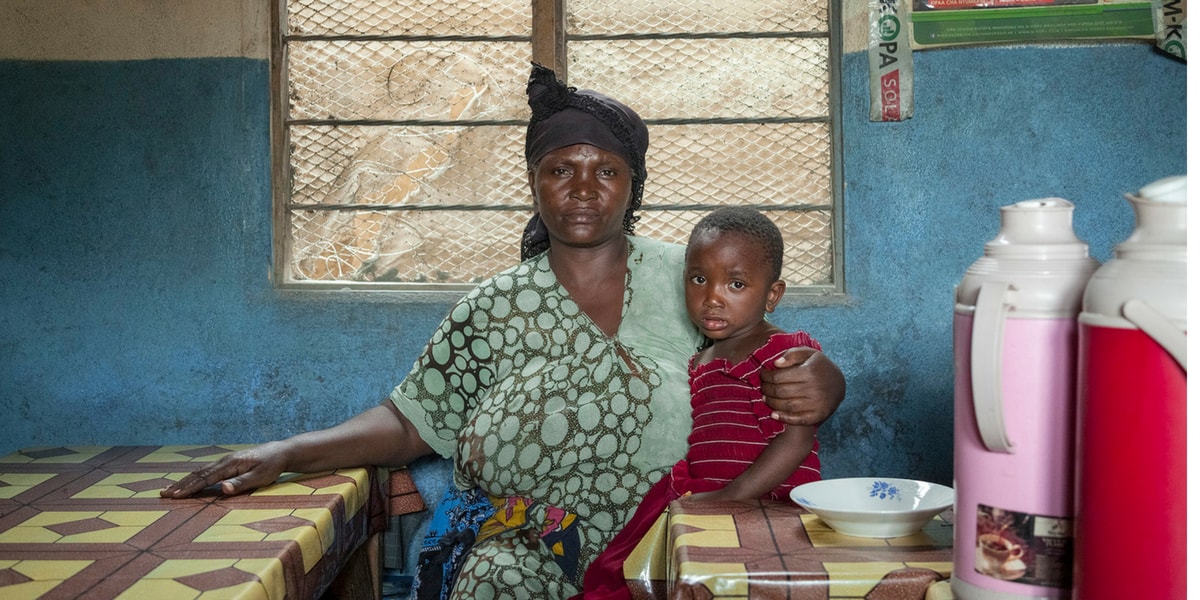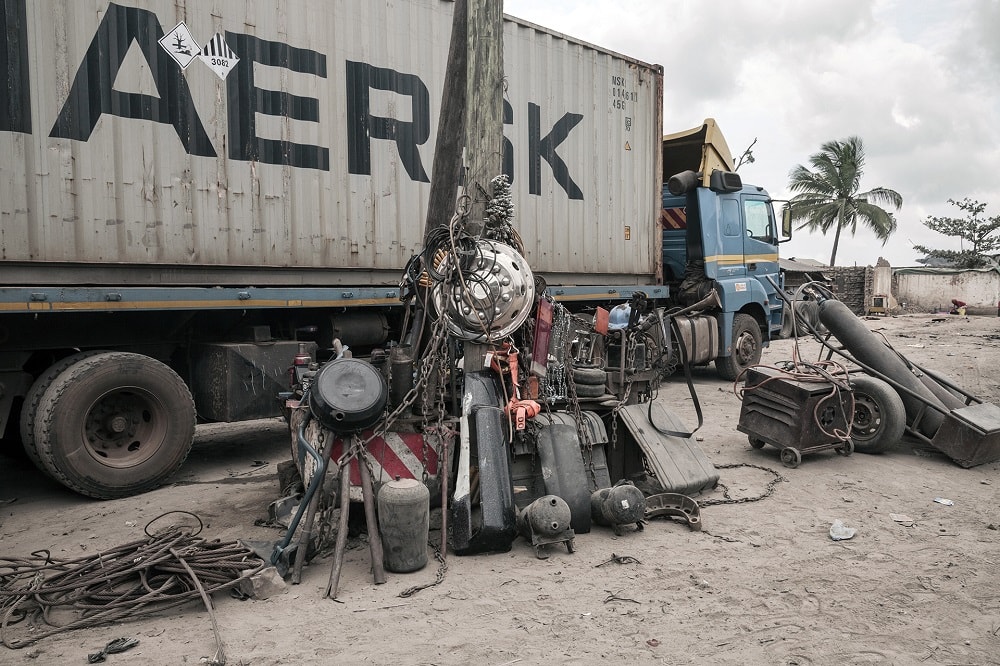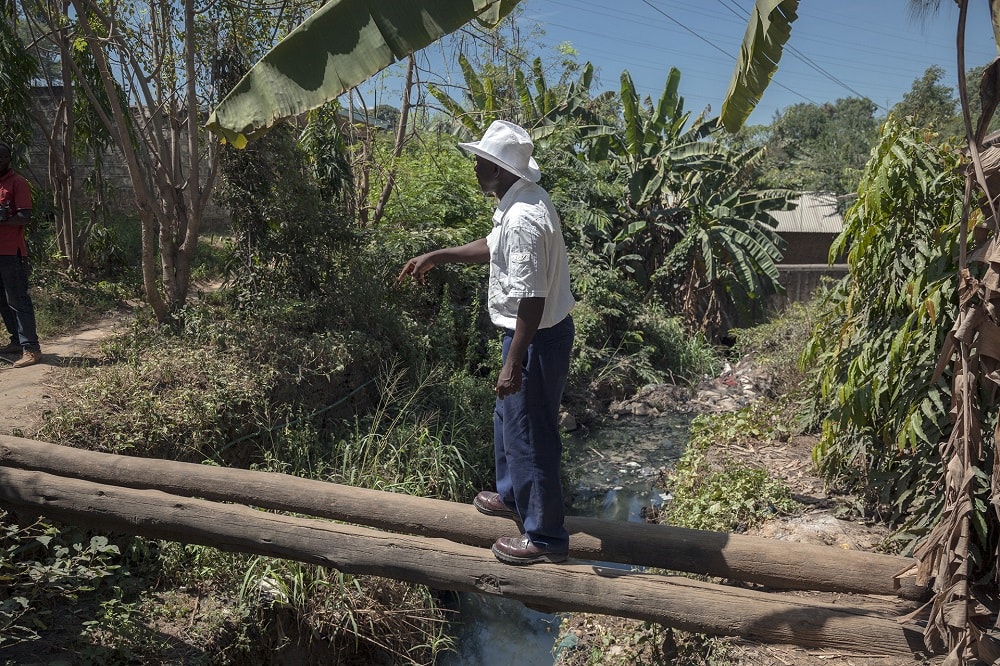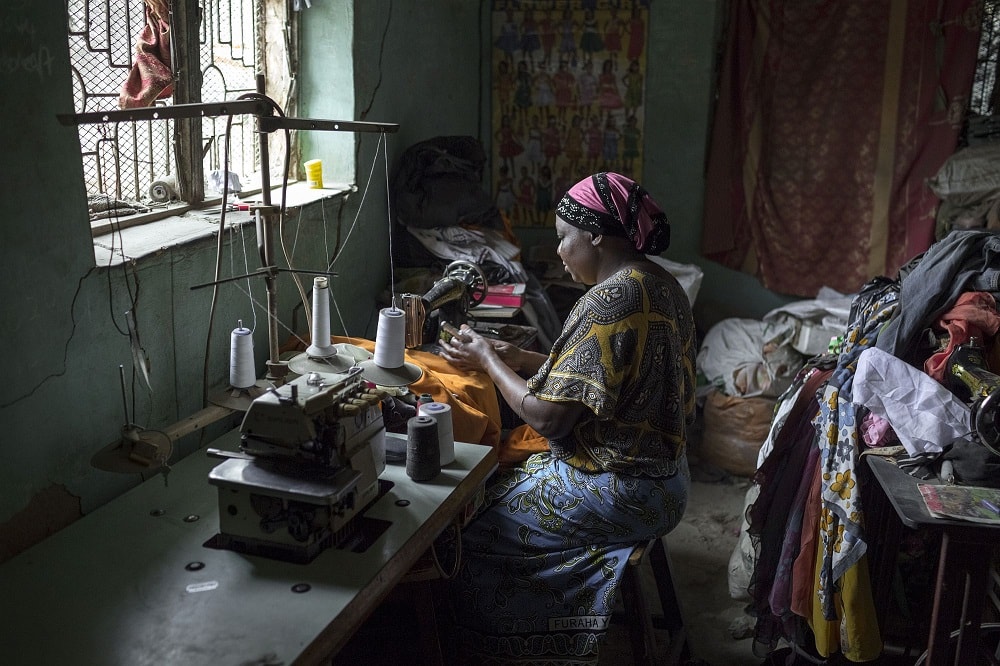Children dropping out of school, trees cut, people living in fear of another wave of forced evictions – the European Investment Bank’s (EIB) project reveals the critical absence of human rights safeguards in the EU’s overseas development financing.
Aleksandra Antonowicz-Cyglicka, Researcher | 30 July 2018

Koneja Aziza Juma from Jomvu Narcol hoping to be properly compensated. Photo by K.Miękus
The nearly 1 000 km route connecting Mombasa and Lake Victoria has always been of key importance for the development of East Africa.
In the beginning of the 20th century, a railway line was the first big infrastructure investment in the region. But realising this massive project has also sacrificed the lives of 2 500 workers, who helped to build it. The railway bridge over the Tsavo river has become particularly notorious because of the two lions that killed tens of workers, and it is still known by the name Man Eaters’ Bridge.
A century later, construction works are taking a toll on those living in the road’s periphery, but this time the government agency is the culprit.

The EIB oblivious to ubiquitous violations
The narrow, crowded motorway is still the main traffic artery of the eastern Africa. Kenya’s National Highways Authority (KENHA) is working to expand a 41.7 km section of the route to the dual carriageway standard, a project that is planned to be completed by 2020. The EIB is one of the development banks supporting the project, but despite its own policies ensuring compliance with the highest standards, this important investment – before it even started – has destroyed lives of hundreds informal settlers in Mombasa’s suburbs.

In 2015, more than a hundred families were forcibly evicted from their homes on the roadside to make way for the construction works. Only later did the international lenders and KENHA halt the road works to mitigate the harm caused to the people and revised the Resettlement Action Plan (RAP) for the whole project. The mitigation process was not satisfactory, and affected people and KENHA are currently in the process of mediation facilitated by the EIB. But we found that there is still a high risk of further forced evictions along the entire project area.
The Resettlement Action Plan of such low quality should not have been accepted by lenders. It lacks key components such as a Stakeholders Implementation Plan, Livelihood Restoration Framework, projects maps and asset inventories, and its compensation methodology leaves affected persons with uncertainty and fear for their livelihoods. None of the annexes to this plan are publicly available and the EIB has not responded to our requests. Translations into Swahili are also unavailable.
Most strikingly, we found that people are being handed the vacate notices without any relocation sites being offered, and financial compensation (if any) is given without any valuation reports. Some movable structures, small buildings, trees or tree nurseries have already been demolished, effectively constituting forced eviction under the international law.

The most vulnerable groups, such as women and children, are at risk of becoming homeless and dropping out of school. Finally, community leaders are intimidated and receive death threats, as the EIB accidentally disclosed the confidential complaints of the project affected persons to the promoter and local authorities. The bank’s complaint mechanism has subsequently acknowledged this blatant mistake, but not before the complainants already suffered renewed reprisals.
What does this case say about the bank’s human rights standards during the projects’ appraisal and monitoring?
The example of Mombasa-Mariakani Dualling Project shows that the EIB is currently unable to manage human rights violations in the projects it supports.
It is particularly worrying given that out of 63 eligible countries under the bank’s External Lending Mandate for the period 2014-2020, as many as 43 are considered authoritarian or hybrid regimes by the Economist Intelligence Unit’s Democracy Index 2017.
Unfortunately, the recent mid-term review of the external mandate did not focus much on the problems related to the EIB’s approach to human rights, including its weak due diligence on the matter. Instead, in 2018 the mandate guarantee was increased by EUR 3.7 billion to deal with even more sensitive migration issues.
In its 2017 report on corporate social responsibility, the EIB proudly indicated that, during that year, it did not undertake a single human rights impact assessment, implying that the quality of its projects did not make it necessary. From Mombasa’s suburbs, this sounds as detached from reality as it can be. The bank’s operational weakness is unfortunately accompanied by a lack of political willingness to develop proper human rights due diligence.
What can be done

As proposed in our report Going Abroad, the EIB should initiate a process to develop a human rights action plan in order to implement the objectives of the EU’s Strategic Framework on Human Rights and Democracy and the EU’s Action Plan for Human Rights and Democracy.
Such plan should provide the rules and mechanisms required to prevent the negative impact on human rights and remedies in case of violations. This should then be used during the ex-ante assessment and ongoing monitoring on a project-by-project basis, whether funded directly or via financial intermediaries.
In addition, throughout the project cycle, the bank should take all necessary measures to mitigate risks of all forms of threats, attacks, or reprisals of community members, workers, activists, journalists, human rights defenders, and civil society organisations who either participate in project development, criticise or oppose a project, or otherwise speak out (or are perceived to speak out) against a project. The bank needs to incorporate clauses preventing reprisals in loan agreements and develop a rapid response system to address threats to project critics.
These policies and practices are still to be developed. Yet, the EIB already has the tools to provide a just and transparent resettlement scheme for the thousands of people living along the Mombasa-Mariakani route.
We informed the EIB about our findings and shared the collected evidence. Any forced evictions or even attempts that leave people in fear and uncertainty, must stop immediately. It is hard to exaggerate the gravity of the situation the local residents are facing.
As you read these lines, people in Mombasa’s suburbs – Changamwe roundabout, Kibaoni, Bangladesh, Jomvu Narcol – continue to fight for their homes: not to be forcibly evicted, and not to be trampled over by an ill-conceived project in the name of development.
Never miss an update
We expose the risks of international public finance and bring critical updates from the ground – straight to your inbox.
Institution: EIB
Location: Kenya
Project: Mombasa-Mariakani road project, Kenya
Tags: human rights | infrastructure | overseas investments
